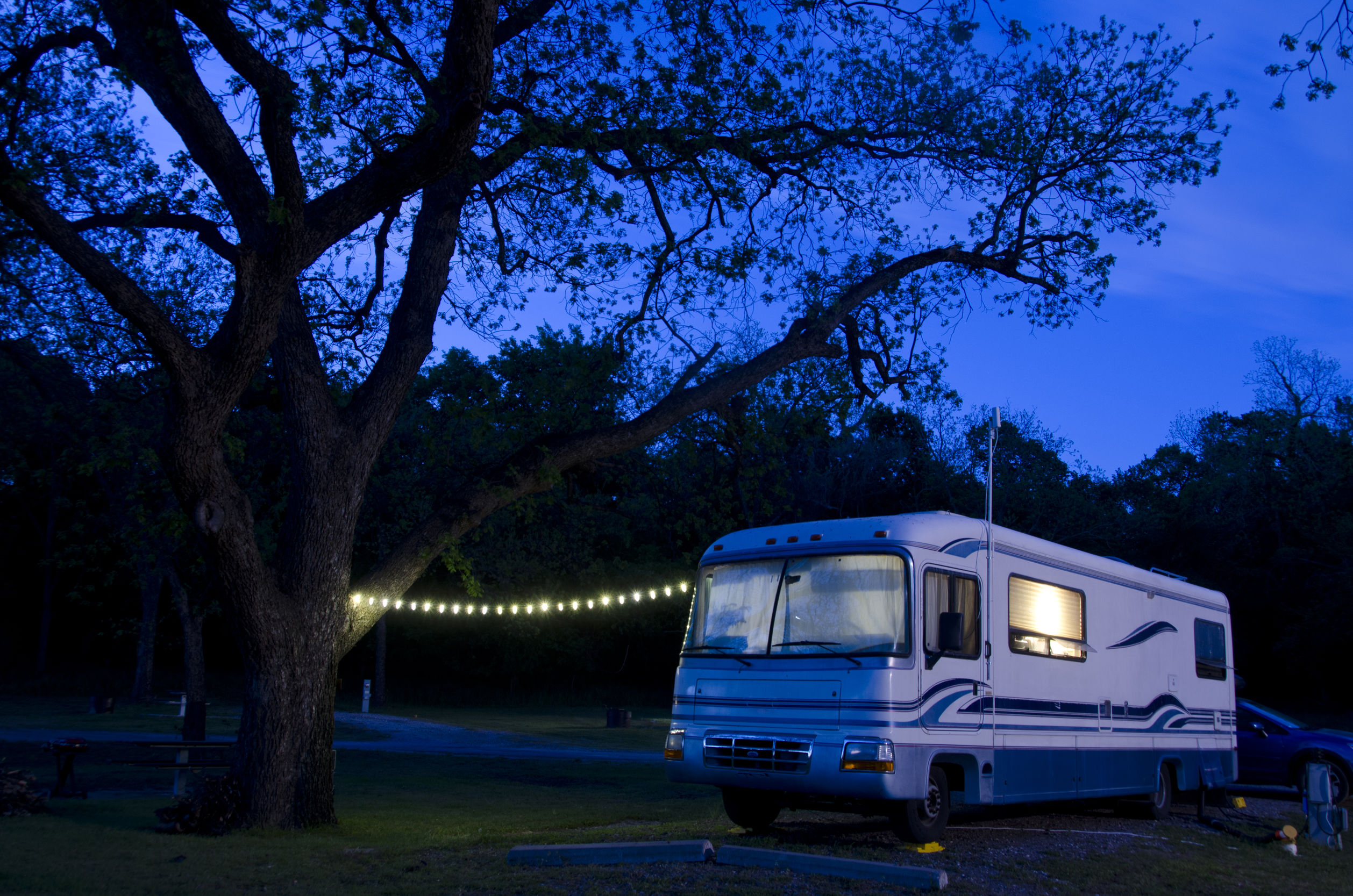As our home away from home, many RVs have been designed with modern conveniences and appliances to make our lives on the road that much more comfortable and convenient.
If you plan to use your RV regularly or for an entire season, it’s a good idea to understand the basics of your RV’s electrical system so that you can troubleshoot as needed, avoid making mistakes, and to continue your travels smoothly.
Be aware of usage
First of all, your RV does not have unlimited power, even if you’re hooked to a power supply. Only so many things can be running at once. You can’t exceed your available wattage or you’ll trip the circuit. That’s why it’s important to know how many Watts (amps x volts) or amps each appliance or convenience takes, and how much you can afford to use, when. Going over your limit can cause damage to parts of your RV. For a 30-amp power supply, that’s 30 x 120 = 3600 watts. For a 50-amp power supply, that’s 50 x 120 = 6000 watts. Some examples of how much wattage or amperage it takes to run appliances and electronics include: coffee maker (8.3 amps), microwave (13 amps), refrigerator (2.8 amps), toaster (8 amps).
Electrical systems
What about electrical systems? You’re probably aware that an RV has both 12-volt and 120-volt electrical systems. The 12-volt is powered by battery (i.e., interior lights, carbon monoxide detectors, starting up the furnace, etc.). Some RV owners choose to wire together a parallel circuit of two 6-volt batteries to extend their battery life. Batteries, of course, need to be charged. This happens automatically when you’re plugged into a power source at a campground or when a generator is running (if you’re not plugged in). The 120-volt is the heavy hitter in that it powers your generator, kitchen appliances, air conditioner, and electrical appliances in the RV. There are inverters that convert 12-volt battery’s direct current to 120-volt alternating current if you need more power for running larger items. Motorhomes have an additional source of 120-volt AC power with an onboard generator.
Power cords
Check your power cord, does it say 30 amp or 50 amp? Does it have three prongs or four? Many RV campgrounds, parks, and resorts have hookups for both while some may have only 30-amp hookups. If you have a 50-amp cord, you’ll need an adapter. Choose a short one as well as a short extension cord (the longer it is, the more likely the voltage will drop). Adapters won’t work the other way, from 50 amps to 30 amps.
Safety
We take conveniences such as electrical power for granted, and we expect the places we visit to have hookups available that are in good shape. However, it’s always a good idea to be on the safe side – both for yourself and your RV. Test the hookup using the polarity tester to make sure the wiring is in good shape. Before you switch everything on, make sure everything is switched off, check that the power cord is plugged in decisively, and then turn it on. Some RVers install a surge guard to protect their RV’s electrical systems from power surges. Power surges can happen from faulty wiring or a thunderstorm. This can get expensive, but if it ever comes in handy, it’s a worthwhile safety investment that can protect you from having to spend thousands to repair your RV’s electrical system. Some RVs already come with one built-in.
Another important safety aspect is remaining aware. Check your battery before leaving on any trips for signs of corruption, frayed wiring, or loose connections. Do not over-tighten connections, and spray any terminals with battery terminal protectant to guard against corrosion. Know where your electrical panels are, and if something isn’t working, check to see if the circuit is tripped or a fuse is blown. Replace as necessary, but if the problem persists, there could be a bigger problem that needs professional input. Of course, do all any maintenance without the power on.

